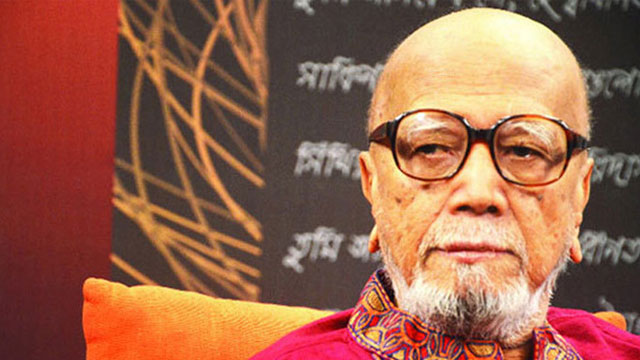Mir Abdus Shukur Al Mahmud, best known as Al Mahmud, is considered one of the greatest Bengali poets to have emerged in the 20th century. His work in Bengali poetry is dominated by his frequent use of regional dialects.
At a glance
Mahmud started his career as a journalist and obtained widespread recognition after Lok Lokantor was published in 1963. In Dhaka, he started writing regularly for Sikandar Abu Zafar's magazine Shamokal.
He took part in the Liberation War of Bangladesh as a freedom fighter in 1971. After independence, Mahmud joined The Daily Ganakantha as an assistant editor. In 1975, he joined Bangladesh Shilpakala Academy as assistant director and retired from the academy as director in 1993.
With more than 50 books in his six-decade long career, he is considered as one of the finest novelists, short story writers and essayists in the country.
He got his recognition immediately after the publication of his volume of verse Lok Lokantor (1963). Later on Kaler Kalosh (1966), Sonali Kabin (1966), Mayabi Porda Dule Otho (1969) established his position in the row of pioneer and prominent poets of the country. After the liberation war of 1971, he began to practise fiction along with poetry.
The year 1975 brought his first book of short stories titled Pankourir Rokto, which created a tumultuous reaction among the Bangla literature readership. The other volumes of his short stories are Souraver Kachhe Porajito (1983), Gandho Bonik (1988), Moyurir Mukh (1994) etc.
In the meantime he has set in the world of novels also. Dahuki (Gallinule, 1992), the first novel from Al Mahmud’s pen, could not prove as a great success but showed the possibility what he could do. A brighter light of it was observed when Kobi O Kolahol (The Poet and the Chaos) got published in 1993. The publication of Upamohadesh (The Subcontinent) and Kabiler Bone (Kabil’s Sister) in the same year declared the genius of his in this arena.
The later efforts that were proved successful are Purush Sundor, (Man and Beauty, published in 1994) and Nishinda Nari (A Herbal Woman), Moru Mushiker Upatyaka (A Valley of the Desert Rats), Aguner Meye (A Jinn Girl, all published in 1994) etc. The most noteworthy feature in Al Mahmud’s novels is that his pen always dares to reveal the life that has barely been sketched in others’ fictional works.
In reality Al Mahmud started his novelistic career with his autobiographical book Je Bhabe Bere Uthi (1984). Though this book is not commonly considered as a novel, it bears some characteristics available in a novel. The next book Dahuki brought Al Mahmud the recognition of a novel writer and he himself admits that it created the self-reliance in him.
His other literary creations include Mayabi Porda Dule Otho, Arobbo Rojonir Rajhash, Bokhtiyarer Ghora, Dinjapan, Ditiya Bhangon, Pankourir Rokto, Nodir Bhitorer Nodi, Prem Prokritir Droho Ar Prarthonar Kobita and Upomohadesh.
Al Mahmud had been honoured with the Ekushey Padak, the Bangla Academy Award, Philips Literary Award, Alakta Literary Award, Sufi Motaher Hossain Literary Gold Medal and the Kabi Jasim Uddin Award in recognition of his contribution to Bangla literature.
In the 1950s he was among those Bengali poets who were outspoken in their writing on such subjects as the events of the Bengali Language Movement, nationalism, political and economic repression, and the struggle against the West Pakistani government.





